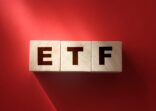For a variety of reasons, ETFs have had little takeup in Asia compared to developed markets.
However, that is changing. A recent Cerulli study predicted ETFs will become core holdings among distributors in the region and they are likely to have two fund lists, one for passive and one for active products.
Roger Bacon, Asia-Pacific head of managed investments at Citi Private Bank, told FSA wealthy Asia clients use few ETFs, but over the next five years acceptance of the passive products will grow.
How are individual ETFs tracking the same index differentiated? They have no active manager to grow and prune the portfolio.
Fund Selector Asia shows that there are indeed performance differences by comparing two passive products, both tracking the CSI 300 Index: the BOC-Prudential Asset Management’s CSI 300 China Tracker and China Asset Management’s CSI 300 Index ETF.
The key differentiating point is the BOC ETF is a synthetic ETF while the ChinaAMC product is a physical ETF.
Synthetic ETFs do not hold the underlying securities or assets like a physical ETF. They use derivatives such as swaps to track the underlying index.
Both ETFs are listed on the Hong Kong exchange. The BOC ETF was listed on 17 July 2007 and trades in Hong Kong dollars. The ChinaAMC ETF is available in dual currency: the renminbi counter started on 17 July 2012 and the Hong Kong dollar counter started on 26 October 2012.
The BOC ETF had HK$7bn ($900m) in assets under management on 29 May, about half the size of the ChinaAMC ETF which had RMB12.9bn ($2.1bn) in AUM.
Leonardo Drago, chief investment officer at Al Wealth Partners, provides a comparative analysis.
Investment strategy review
Being a synthetic ETF, the BOC ETF invests in A-shares indirectly through A-share access products (AXPs). Each AXP is a derivative instrument linked to an A-share or a basket of A-shares.
The BOC vehicle may also invest directly in A-shares using its Qualified Foreign Institutional Investor quota of $90m, according to its fact sheet.
The ChinaAMC ETF, on the other hand, uses a full replication strategy by physically holdings securities included in the index in the same weightings as that of the index, through the Renminbi Qualified Foreign Institutional Investor Quota and the Shanghai-Hong Kong Stock Connect scheme.
Both ETFs have a provision to use a representative sampling strategy, which means they can invest in some, but not all, of the relevant constituent stocks.
A snapshot of portfolio allocation, according to fund fact sheets on 29 May:

















